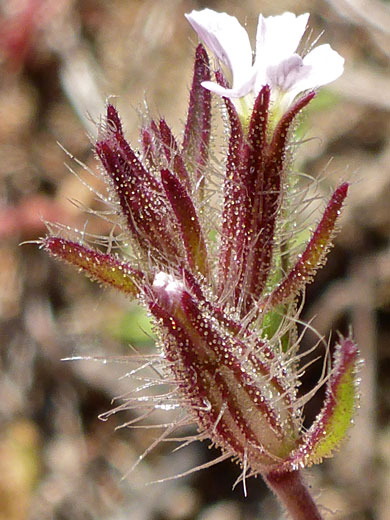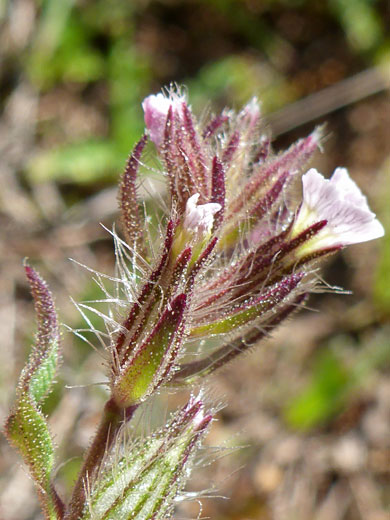Common name:
Small-flowered catchfly
Family:
Scientific name:
Silene gallica
Main flower color:
Range:
The Pacific states, south Arizona and scattered places in Texas (non-native)
Height:
Up to 16 inches
Habitat:
Fields, roadsides, disturbed ground
Leaves:
Opposite, oblanceolate to oblong, pointed at the tip, up to 1.5 inches long
Season:
February to May
Stems of silene gallica, a naturalized species from Europe, have a dense covering of short glandular hairs, and longer, thicker, spreading, non-glandular hairs. Leaves are largest around the base, and also hairy, especially underneath. Margins are entire.
Flowers are produced at the tip of the stem and from the upper leaf nodes. The slender calyx is pale green, crossed by ten darker green or purplish veins, which are lined with glandular hairs. The calyx is shallowly (less than a quarter) divided into five narrow, purplish lobes. The five clawed corolla lobes are white or pale to dark pink, slightly fringed. Ten stamens and three styles are included within the corolla tube.
Flowers are produced at the tip of the stem and from the upper leaf nodes. The slender calyx is pale green, crossed by ten darker green or purplish veins, which are lined with glandular hairs. The calyx is shallowly (less than a quarter) divided into five narrow, purplish lobes. The five clawed corolla lobes are white or pale to dark pink, slightly fringed. Ten stamens and three styles are included within the corolla tube.
All Contents © Copyright The American Southwest | Comments and Questions | Contribute | Site Map




